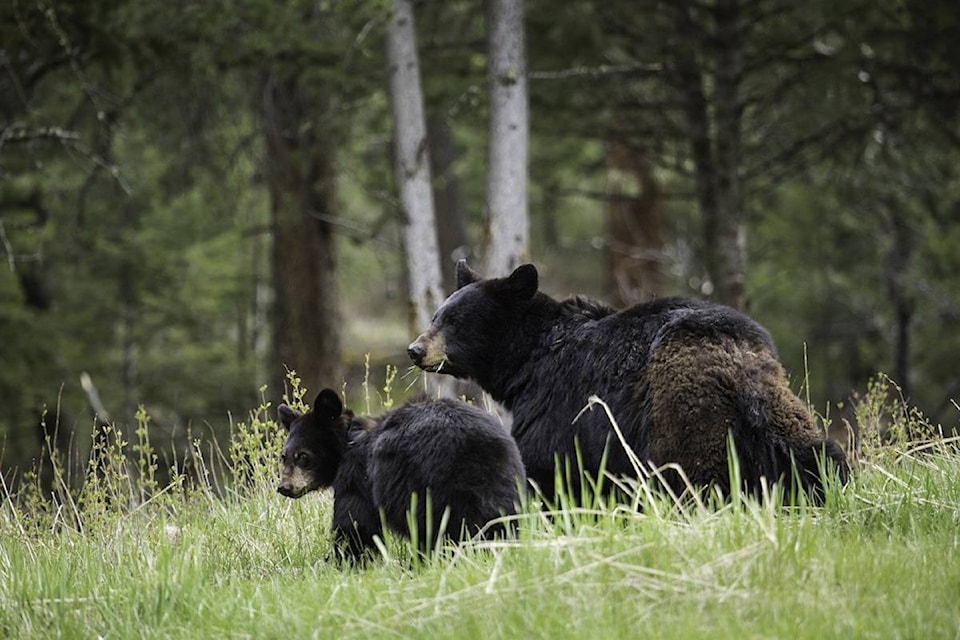Complaints about bears in communities throughout British Columbia have nearly doubled since last year, according to the provincial conservation service.
Officers received 8,900 calls about black bears between April 1 and Aug. 1 of this year, up from 4,900 such complaints during the same period in 2016, said Chris Doyle, deputy chief with the B.C. Conservation Officer Service.
RELATED: Bear conflicts on the rise in B.C.
Hundreds of calls have also been received about encounters with grizzly bears, Doyle said in an interview on Wednesday.
Most of the complaints are about bears getting into human “attractants,” like garbage or fruit trees in developed areas, Doyle said.
“We’ve got everything from complaints of a bear in a yard to a bear sighting, a bear getting into garbage, right to bears breaking into houses and a few calls about bears injuring people,” he said.
A number of factors could be contributing to the increase in human-bear conflicts, including an increased bear population and a wet, cold spring, Doyle added.
RELATED: Conservation expecting highest number of bears in recent years
“That delayed some of the natural food from ripening,” he said. “So that brought bears into conflict and some of them have stayed in conflict. And typically when a bear gets into conflict, the level of conflict will escalate.”
An officer’s response will depend on the behaviour of the bear, and Doyle said that may include relocating or destroying the animal.
He could not give figures for how many bears had been euthanized this year, but said when bear conflicts rise then the number of animals destroyed also goes up.
RELATED: Officers forced to kill four bears on Vancouver Island
The public can help cut back on human-bear conflicts, by securing garbage, removing fruit from trees and staying away from wildlife, Doyle said.
Anyone found feeding wild animals could be fined or charged, and many municipalities frequented by bears have bylaws around disposing of materials that could attract the animals.
“Ultimately, we know conflict will occur and a lot of it is preventable so we really hammer home the message about securing attractants around businesses and residences,” Doyle said.
Nature could also help decrease the numbers in the late summer and fall if berry crops and fish runs are good this year, he added.



